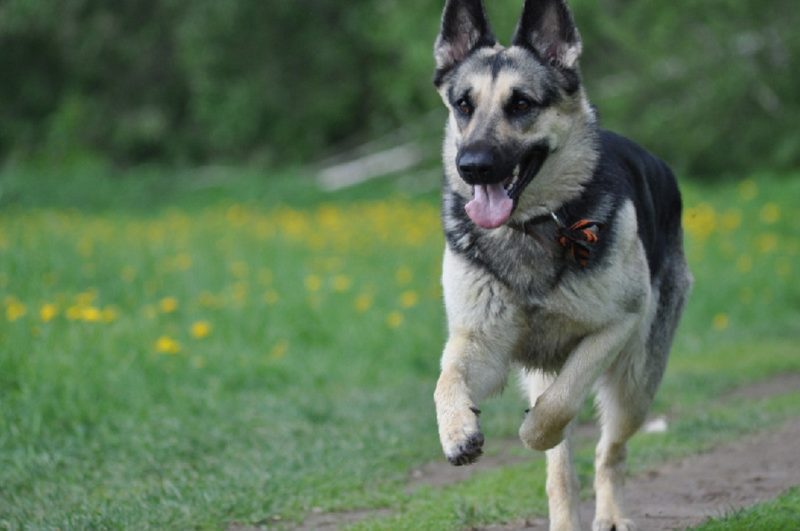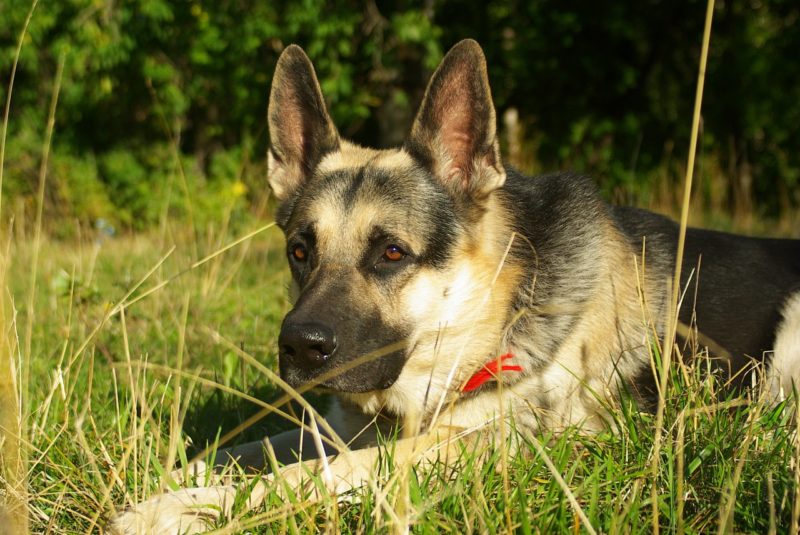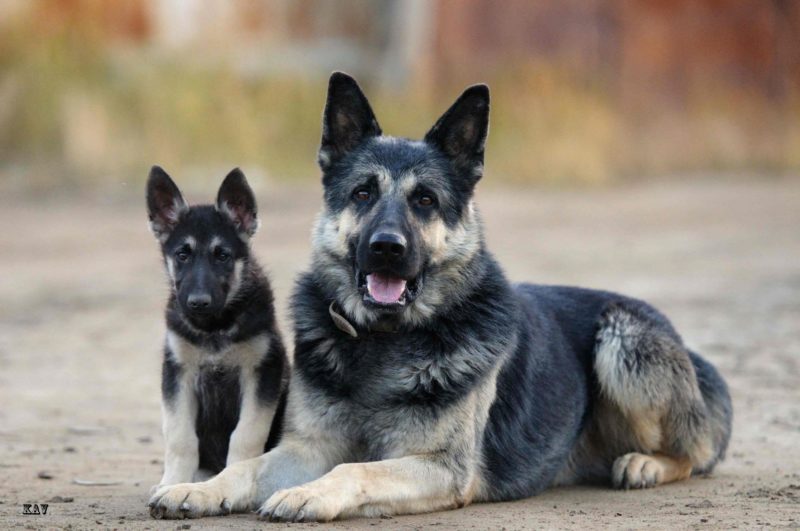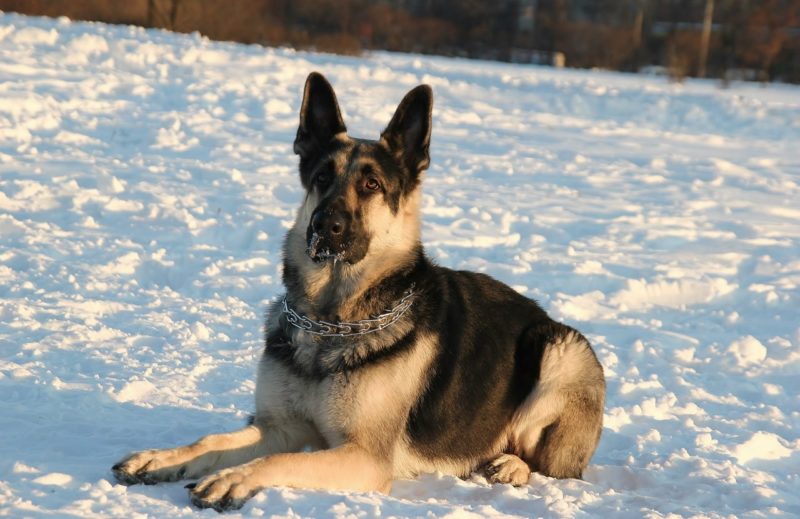East European Shepherd is a direct descendant of the well-known German Shepherd. But despite the close relationship, this is a separate breed, formed on the expanses of the former USSR under the influence of a number of factors. In the article, readers will be able to get acquainted with the features of the breed closer, which will allow to decide on the answer to the question: should become the owner of such a faithful and at the same time rather big dog.
Material Content:
Description and characteristics of the breed
Presentation of the light of the VEO is the result of the painstaking work of dog handlers that were carried out behind the Iron Curtain. Since the work on improving the German shepherd took place in isolation, a new breed appeared, which is distinguished by its larger size, color and more poise.
This is a wonderful service dog that can conduct rescue operations, look for drugs and weapons.
If there is no need for such areas of activity, he will become an excellent athlete and will demonstrate excellent results in agility, wave pulling or vacancy.
This characteristic requires future owners a significant amount of free time. Otherwise, the pet will demonstrate all its ingenuity, finding it application in a variety of "harmful" activities.
VEO get along well with children. They are aware of the vulnerability of the child.However, until the puppies of the East European Shepherd have reached a more mature age, all games should be held under the control of the elders. Since the dog, in spite of all its love and affection, can inadvertently harm children, who, in turn, should initially be inculcated with proper animal handling skills.
Origin history
Despite the common belief that the history of the breed goes back to the beginning of the 20th century, this is not so. In fact, at that time, German shepherds necessary for military purposes began to be brought from abroad. The task of breeding a larger animal with a powerful body, which can easily withstand the climatic conditions of the various regions where the Stalinist camps were deployed, arose in 1924 in front of the cynologists of the Red Star (departmental nursery). Representatives of the breed were subjected to metization: in the north they crossed with huskies, in the southern regions with representatives of shepherd breeds.
At the same time, in Europe, from shepherd dogs, in which Soviet cynologists developed malice and distrust, tried to achieve greater socialization, devotion, mobility. As a result, when the socialist country ceased to exist, it turned out that these were different directions in the development of the once old-type shepherd.
In the USSR, the standard for the VEO breed appeared back in 1964, but it never gained world recognition.
And today, work continues on the allocation of the East European shepherd as a separate breed - exhibitions are held where you can see how dissimilar the modern East is and the old German shepherd.
Life span
According to average statistics, the life expectancy of VEO varies between 12 - 15 years. Like other pets, the indicator affects the quality of life of the animal. With proper care and maintenance of the dog, the life span can be extended by a few more years.
East European Shepherd Dog Standard
Although the International Film Festival has not recognized the breed standard, purebred animals that may qualify for participation in exhibitions in the Russian Federation must meet the following parameters:
- head - wedge-shaped, proportional to the body;
- muzzle - moderately tapering to the nose, with a relatively pronounced transition from the frontal part;
- the nose is large, black;
- jaw - lower especially pronounced;
- eyes - in the form of an oval with an oblique fit;
- ears are medium, erect, with the shape of an isosceles triangle;
- body - elongated (10–17% longer than the height at the withers), with wide croup and back, lower back strong and short, chest width moderate;
- limbs - erect, strong with parallel setting;
- the tail is saber-shaped, lowered in a calm state, and when excited, the last third of the length bends upward;
- coat - straight, coarse, medium length;
- colors of the East European Shepherd Dog - black and black-eyed with a mask and a lightened background, are allowed, but are not considered desirable, are red-zoned and zoned-gray;
- growth - 62 - 76;
- weight - 35 - 50 kg (a female weighs a little less than a male).
All these characteristics are important when choosing a baby. If the latter corresponds to them, then in the future he will be able to qualify for awards and access to breeding.
Dog's purpose
The East European Shepherd is rightfully considered an official breed of dog. Initially, the goal of removing the easterner was to obtain a fearless four-legged assistant of guards, patrol and other military structures. Today, social has been added to this area of use: VEO can be an excellent companion who is ready to give his life for his master. The owner, properly raising a pet, receives not only a brave bodyguard, lifeguard, but also a true friend.
The main character trait of such a pet is its focus on the owner.
The dog is wary of all outsiders, however, due to its balance, it takes a defensive position only in case of real danger, and the animal does it instantly.
Maintenance, care and feeding
Keeping a shepherd dog is possible both in the apartment and in the yard. In the first embodiment, the place should be equipped with a couch, which will be located in such a way that it does not interfere with the inhabitants of the home.
The optimal material for the rug is a rough canvas. You can also use a quilted camel blanket.
If the shepherd dog lives on the street, then before purchasing it is necessary to equip the aviary with a warm booth that will not freeze. The latter is especially important in regions with cold winters.
On a note! From the first days of the appearance of the puppy in the house, he should be accustomed to the collar. Taking a pet for a walk should only be after he is comfortable in the accessory and he has been given all the necessary vaccinations.
Caring for an East European Shepherd Dog is quite simple:
- The animal should be combed out twice a week. In this case, it is recommended to use a hard brush. Bathing is carried out only with severe contamination of the coat.
- Check your eyes and ears every month. If necessary, the organs of vision and hearing are wiped with cotton swabs moistened with special means. The latter in a wide assortment are presented in veterinary pharmacies.
- It is recommended that you brush your pet's teeth every month, which you should teach it to from an early age. You also need to give the dog bones to help remove clogged particles of natural food.
- If the dog lives in an apartment, clipping of the claws may be necessary. Since they are very coarse, it is better if the animal will grind them on their own while walking.
- Every year it is necessary to visit a veterinary clinic with a pet, where scheduled examinations and vaccinations will be carried out.
Feeding will not cause problems for owners. Preferred types of products are beef, offal, sour milk, cereals, and low-fat fish.
The main rule that owners of four-legged pets should not forget is that in one container you can’t mix natural food and dry food. Such rash actions can lead to diseases of the digestive system of the animal.
How to train and educate a pet
The character of the dog can be described as balanced. However, all its positive qualities are formed - love for children, loyalty and unlimited love for the owner - only with competent training and systematic training.
It is worth noting that educational activities will not be burdensome, but will require a sufficient amount of time from the owner. VEO seeks to please the owner and happily executes commands for which he also receives food promotion.
Representatives of the breed get used to the collar and leash within 1 - 2 days. And from 4 months you can start vocational training, especially if the owner is faced with the goal of obtaining not only an exhibition animal, but also a dog with working qualities.
In general, VEO learns the obedience training course in 9 months. However, this does not mean that in the future you can not pay attention to the training. Every day, skills will need to be honed, especially if it is a guide dog.
Pros and cons of the breed
Based on the description of the breed, a number of advantages of VEO can be distinguished, although of course there are also disadvantages.
Main advantages:
- magnificent security qualities that make a dog a good watchman of the territory entrusted to him;
- excellent learning ability;
- high intelligence;
- endurance;
- affection for small family members;
- incredulity and wariness to strangers;
- ability to very quickly socialize and adapt to various conditions.
As disadvantages, owners and breeders call:
- plentiful molting;
- tendency to joint diseases;
- the need for proper and continuous education.
The East European Shepherd Dog is a vivid representative of the service dog class, which will become support and support only with proper training. This should not be forgotten if the question was about choosing a pet.
















